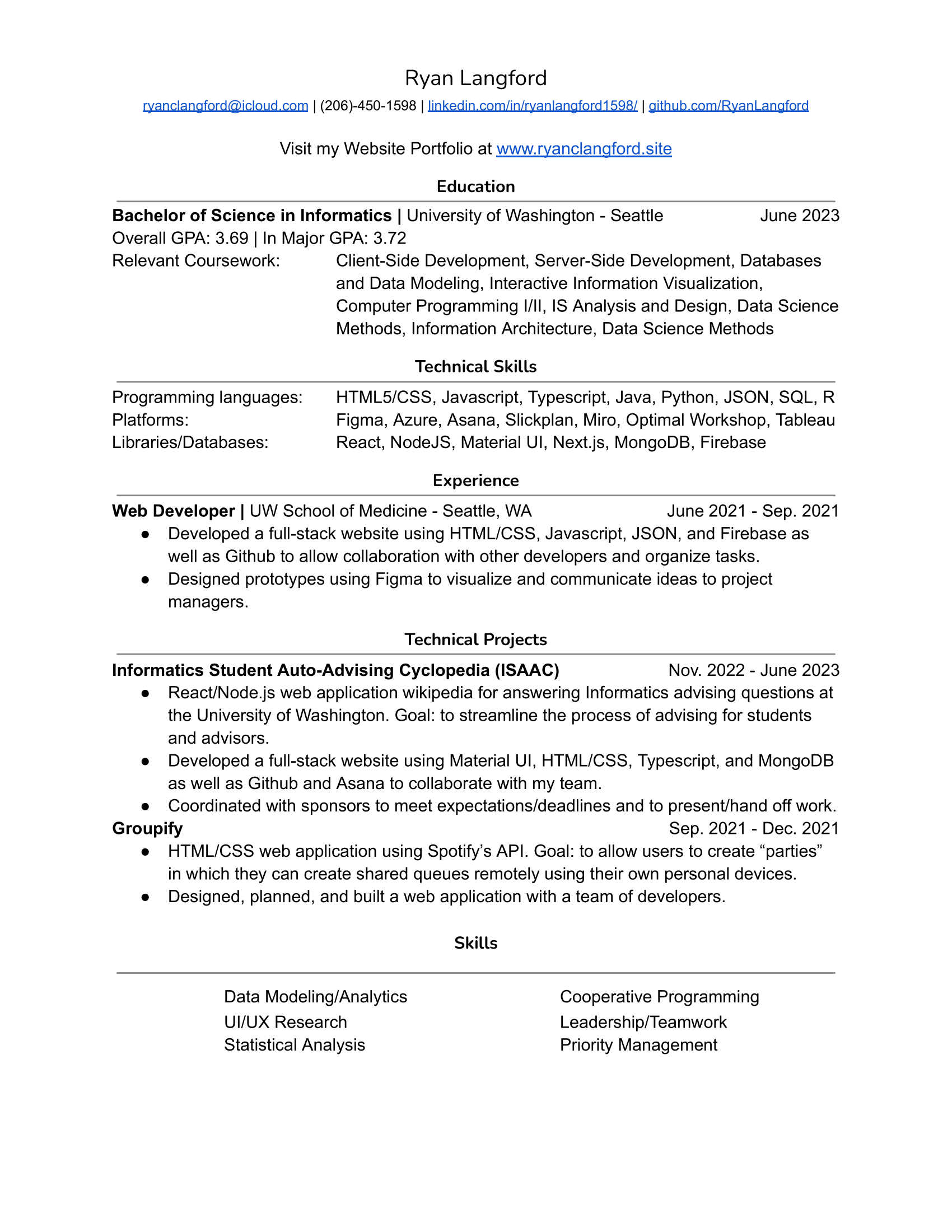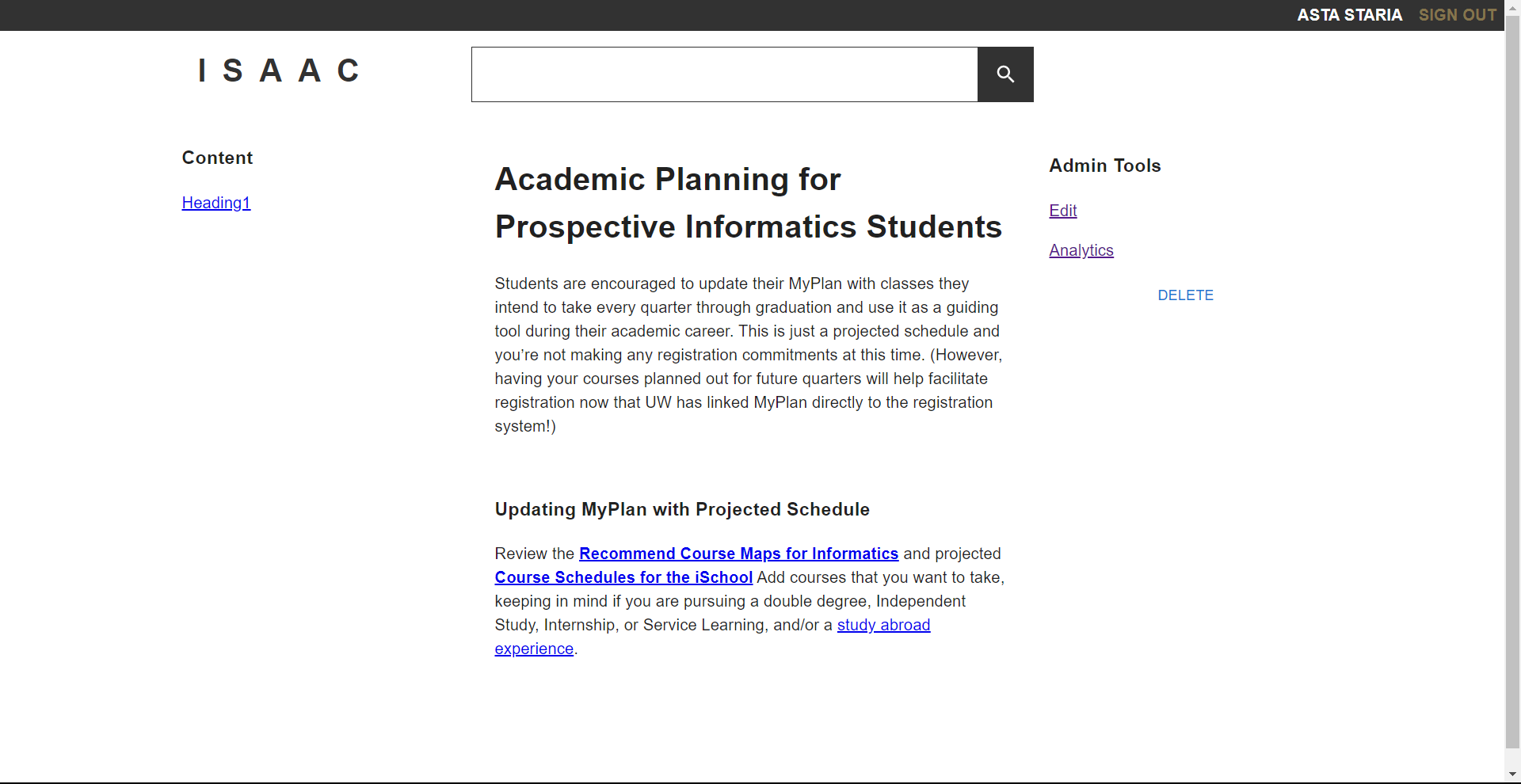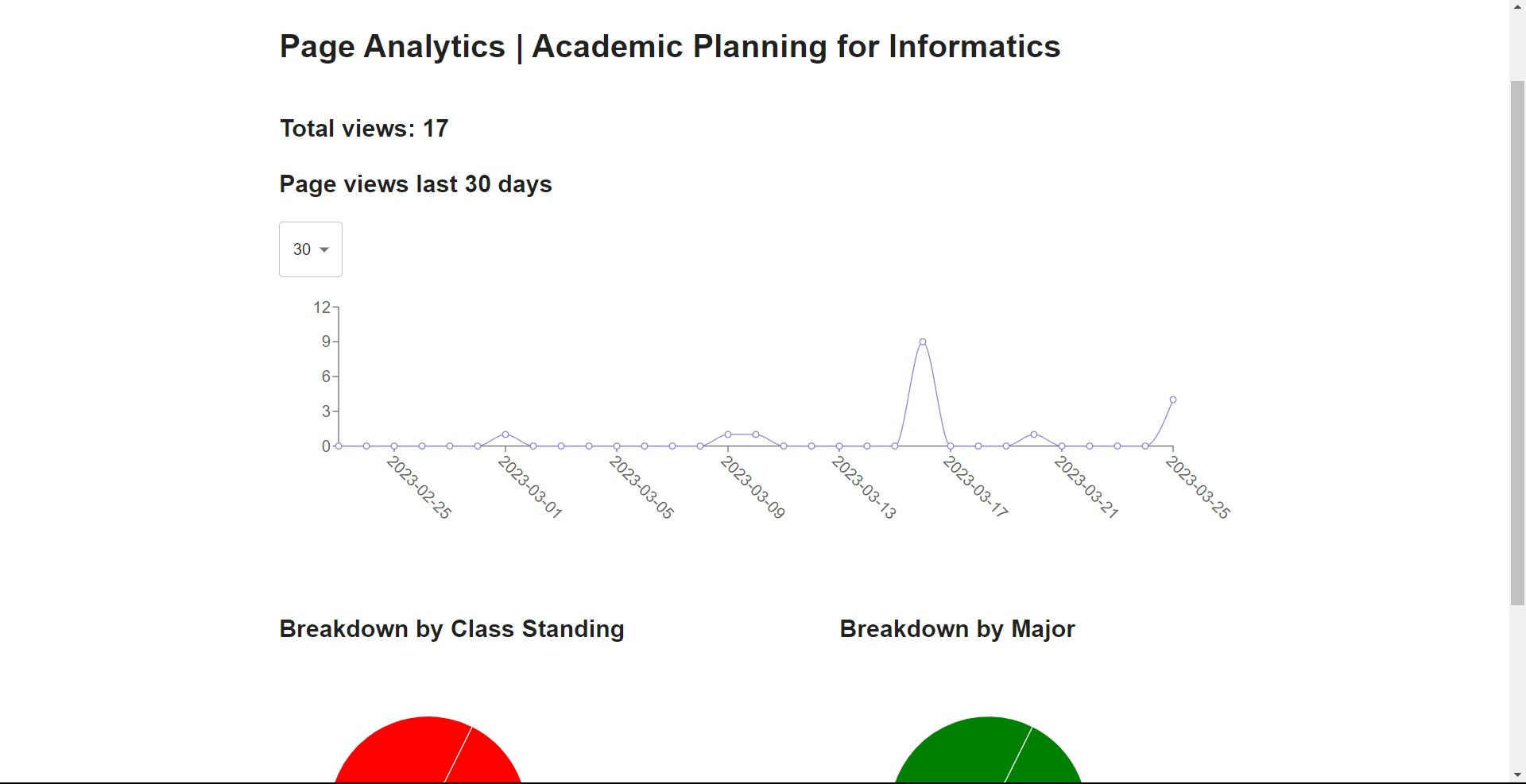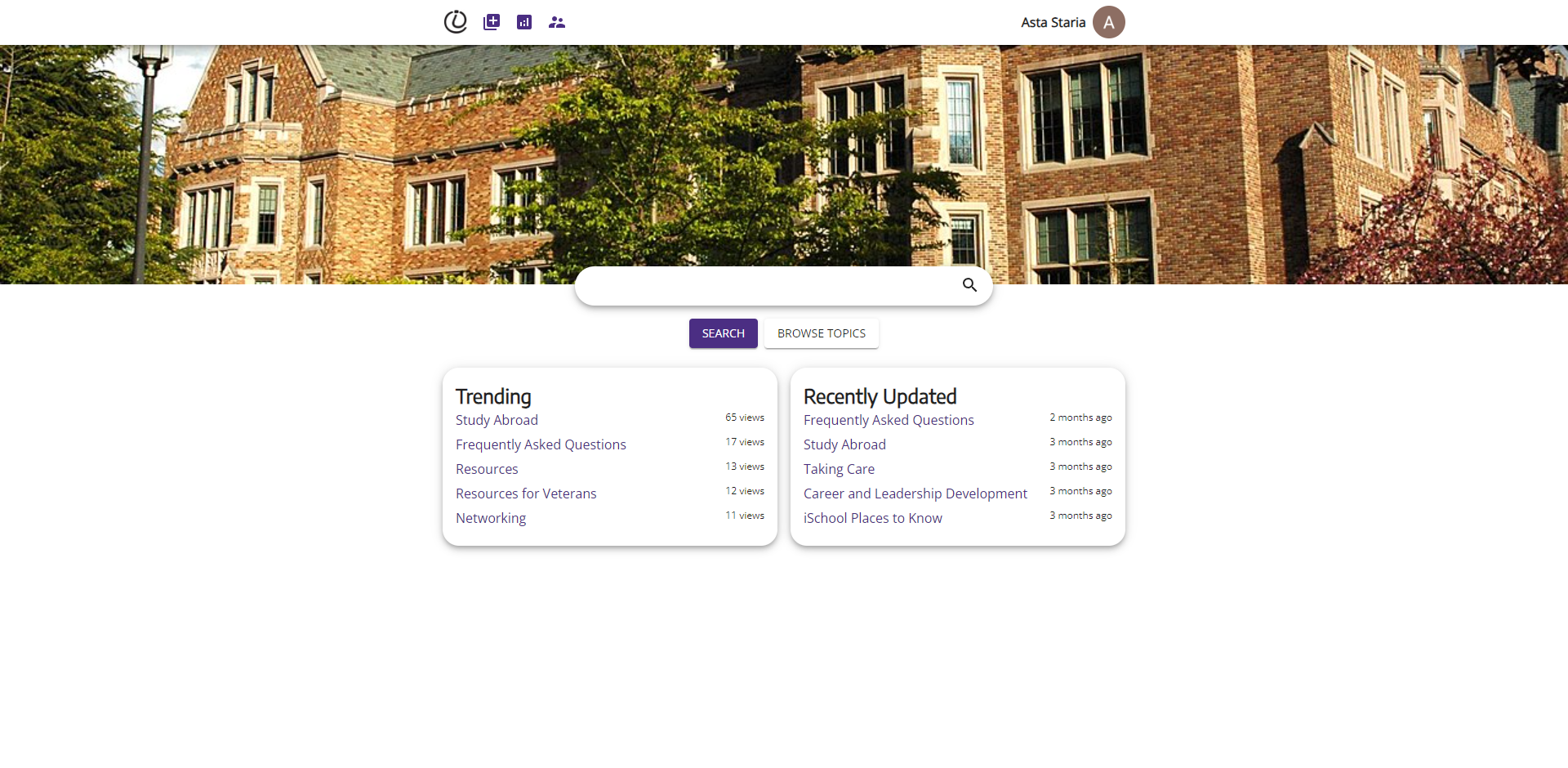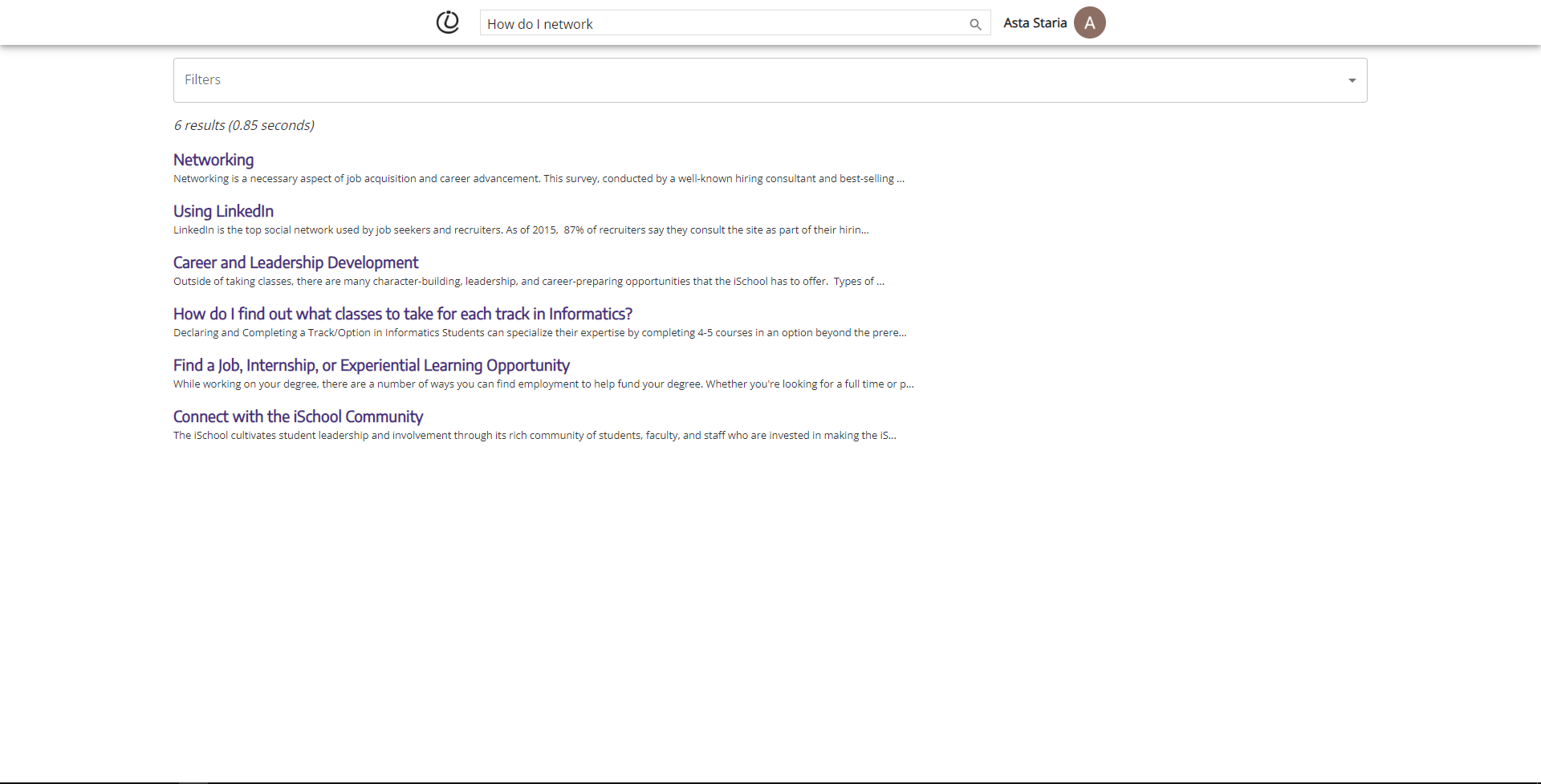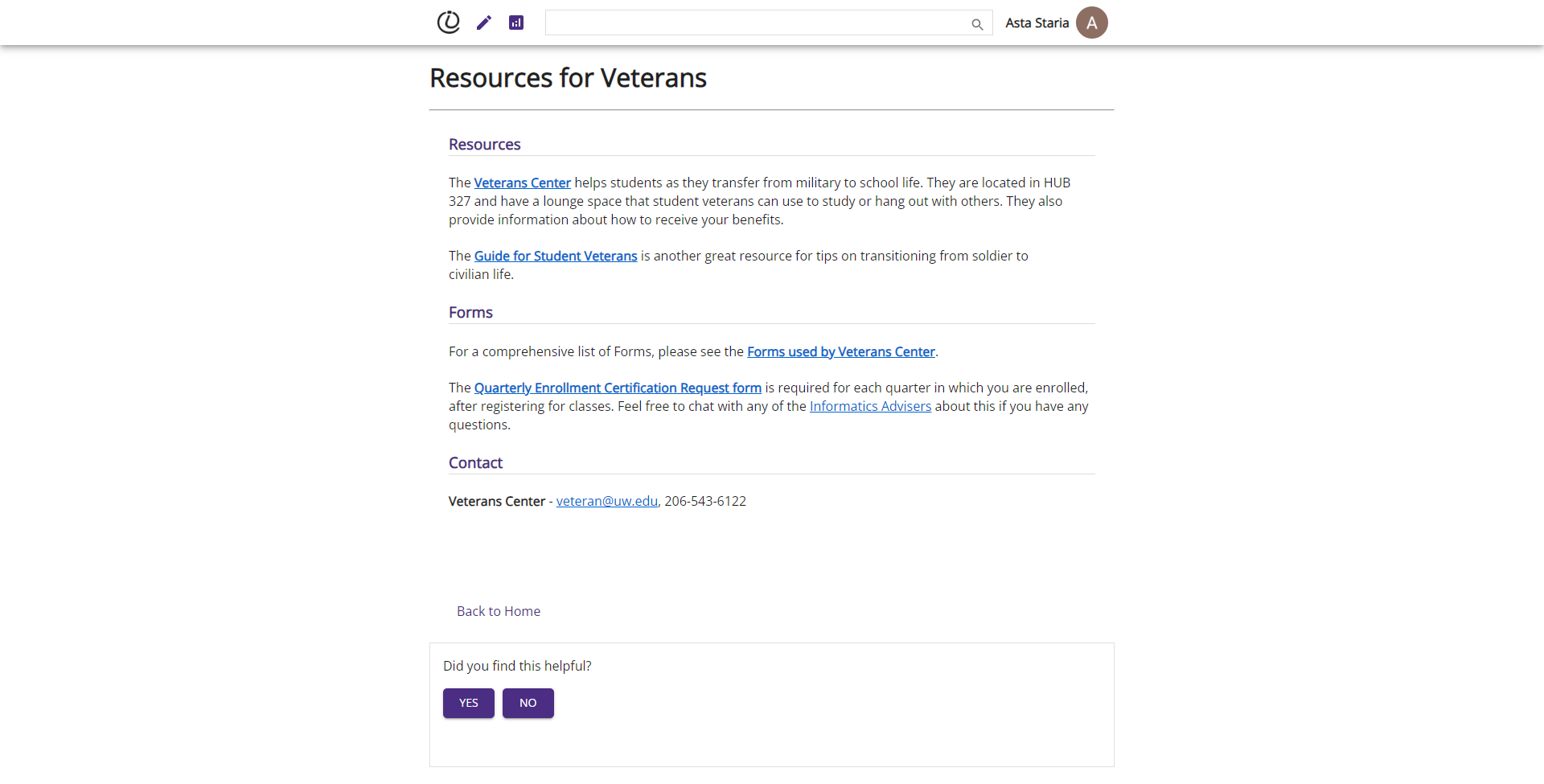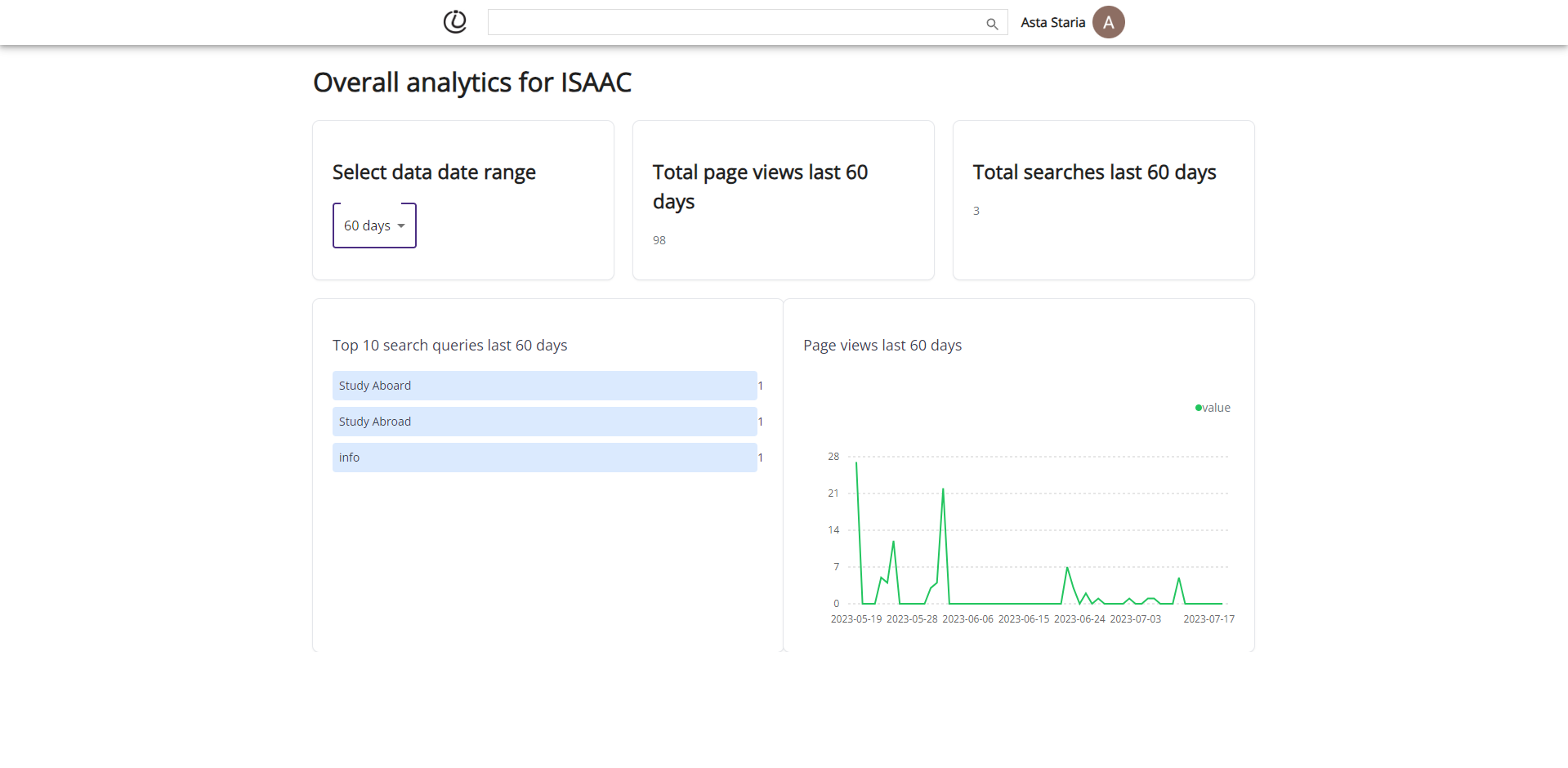Ryan Langford's Portfolio
Welcome to my portfolio. My name is Ryan Langford and I am passionate about design, games and storytelling. I recently graduated from the University of Washington with a Bachelors of Science in Informatics focused on Web Development and Human-Computer Interaction.
My Resume
If you are having trouble viewing the framed version of my resume below, click here to download it.
ISAAC
About the Project
As part of my Informatics degree, I am working on a large-scale capstone project with a team of other Informatics students. This project is taking place over my final two quarters at the University of Washington and is sponsored by the UW Informatics Advising Department. My team and I were tasked with identifying the blockers with the current advising solutions within the informatics department and creating a solution that is more efficient and scalable.
Problem Space
The Informatics department is expanding rapidly, increasing from about 800 active students to around 1400 students in the near future. Currently, the average response rate for student questions is about two days. This is due to the high volume of repetitive questions that could be found online which make up the majority of the adviser's daily inboxes. These simple questions prevent the advisors from allocating more time to complex questions that require an advisor. The knowledge base used up to this point is a Canvas website with hundreds of pages, but no way to search or index the content. We hypothesized that a rework of how knowledge flows from advisers to students might alleviate the major pain points of both parties. This led our team to base our research on the question: How might we streamline the processing of simple advising questions for students and student services?
Initial Project Research
We started with some preliminary user research with the students. By sending out surveys to current and prospective informatics students, we quickly found out that many students seeking advising were not aware of the Canvas site that the advisors had made. Among those that had heard of it, most reported that they didn't even try using it because of how difficult it was to navigate to useful information. As we suspected, the current solution did not meet the student's needs. This caused the students to seek advisors for all of their questions, overloading them and causing long wait times.
Project Proposal
In order to fulfill both stakeholder's needs, our solution needs a few key concepts. First, our solution has to be maintainable. Advisors must be able to keep the information up-to-date quickly and easily so that the solution remains valid and advisors still have time to answer complex questions. Next, our solution must be scalable to handle the growing informatics community reliably. Our solution must also be searchable. The problem exists partially because the Canvas page is too difficult to navigate. Our propososed solution will only be an improvement if it is easy and convenient for students to use. Finnally, our solution should provide meaningful data and analytics to the advisors so that knowledge discrepancies like the one that caused this problem are less likely to happen again in the future.
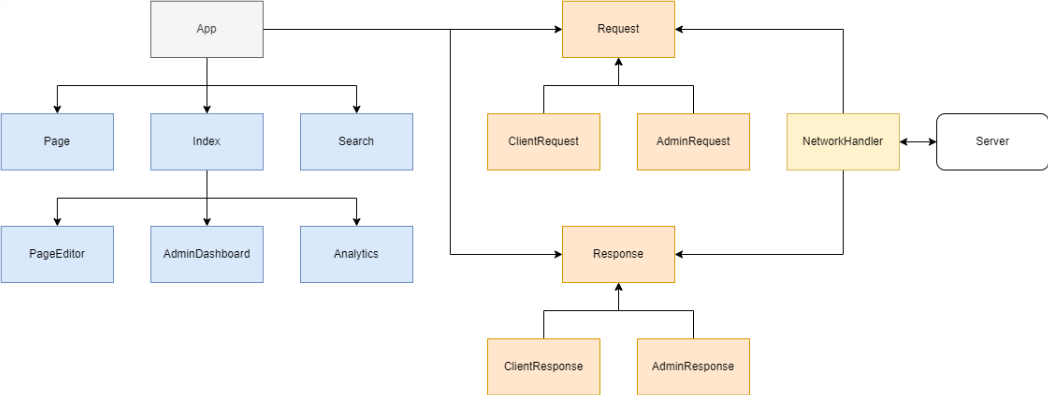
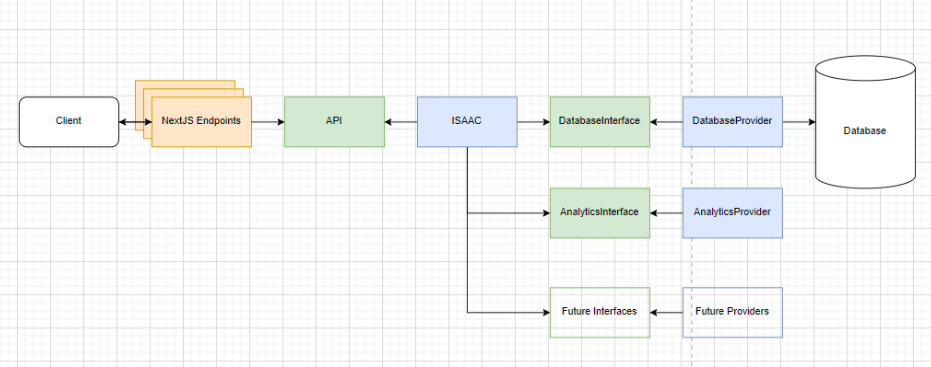
The First Code Sprint
Now that we had a clearer picture of the problem space and what our solution needs to have, my group and I spent the last three weeks of the first half of capstone creating our MVP (Minimum Viable Product). My role in this stage of development was front-end functionality. We decided to make a web application in the style of a searchable wiki like wikepedia. We created the index and search pages, which organize pages of content into categories. Then, I added the ability to create new pages and edit existing ones using a rich text editor powered by markdown. Markdown was a simple and effective way of displaying content in a pleasing way without adding too much complexity on the advisers side. Additionally the rich text editor includes a toolbar that will automatically add the appropriate markdown syntax. Nearing the end of the first code sprint, we got news from our sponsors that we would no longer be able to use the universities authentication for our site. This was a problem because our site currently relied on university authentication to grant admin privileges to advisors and certain other faculty. After some deliberation, we ended up switching to google authentication for the time being and assigned admin privileges for testing manually.
Version 2
With our MVP complete, we started the second half of our project off with another round of user testing. Some features we were looking to improve were the search algorithm, data gathering and aggregation, admin tool usability, and overall UI beautification. Over the next 3 months, we continued development on ISAAC and the website. Our finished product included all of the features we hoped to implement at the beginning of the second quarter, and our sponsors were excited by what we had presented to them and the potential for what it could be used for.
Project Vision
With our capstone project complete, we passed it onto our sponsors. ISAAC is not just a website. With a centralized information repository, ISSAC has the potential to expand into other technologies such as an AI chatbot and more. Both our sponsors and ourselves are excited about the future of ISAAC, and it will continue to be developed by future capstone teams who share the goal of making advising information more useful and accessible for both students and advisors.
Groupify
If you have a Spotify premium account, click here to check out the groupify app!
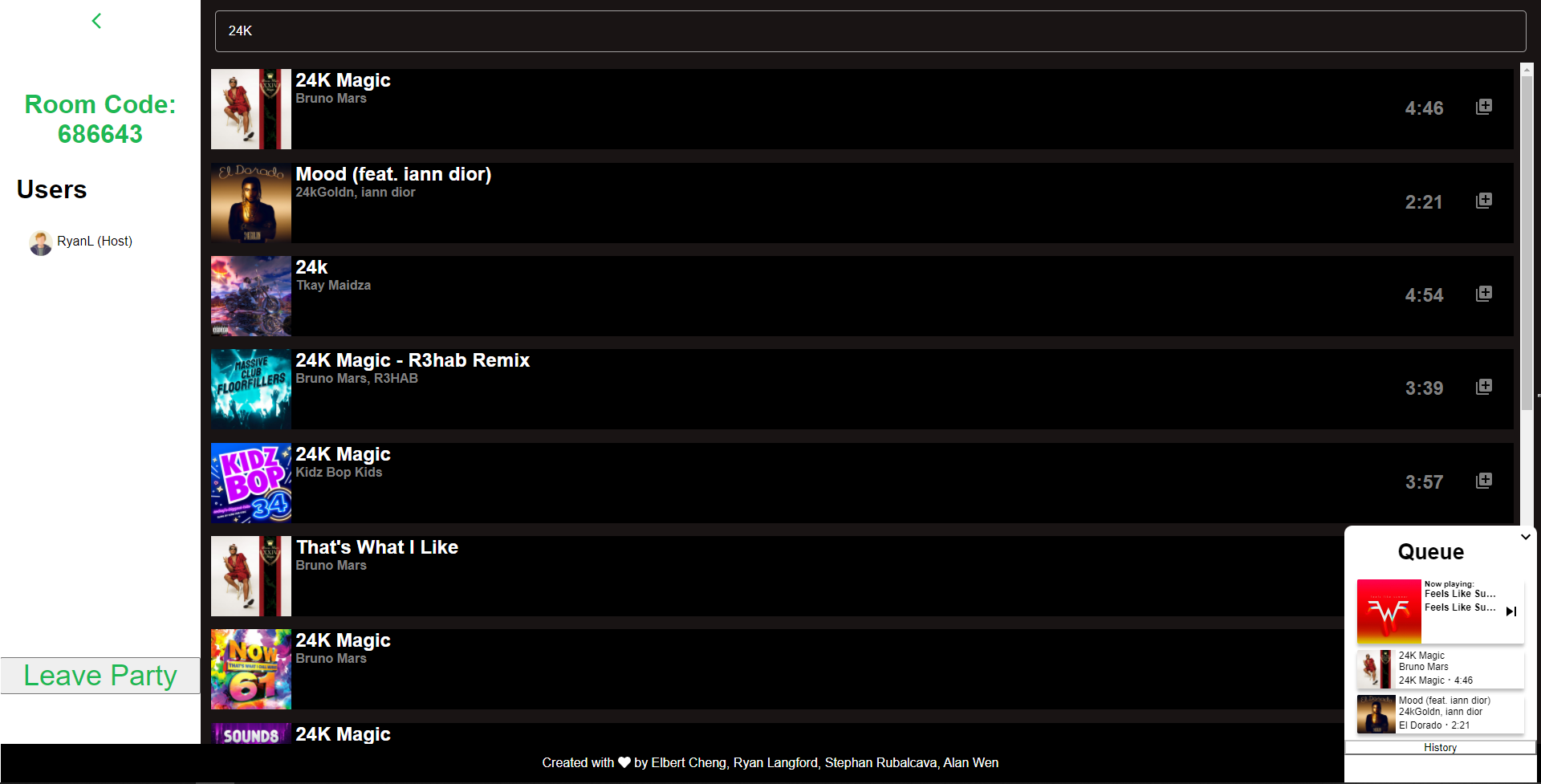
Groupify is a web-based Spotify extension that allows users more control when playing music in a group setting. My group and I designed this app with social events in mind. Before Groupify, we felt that equal control over the music was difficult to achieve in a large group. Groupify fixes this by allowing all users to join a party and control one music player using the host's Spotify account. This way, everyone in the Groupify party has remote access to the music to add, remove, or skip songs without having to track down the person playing the music.
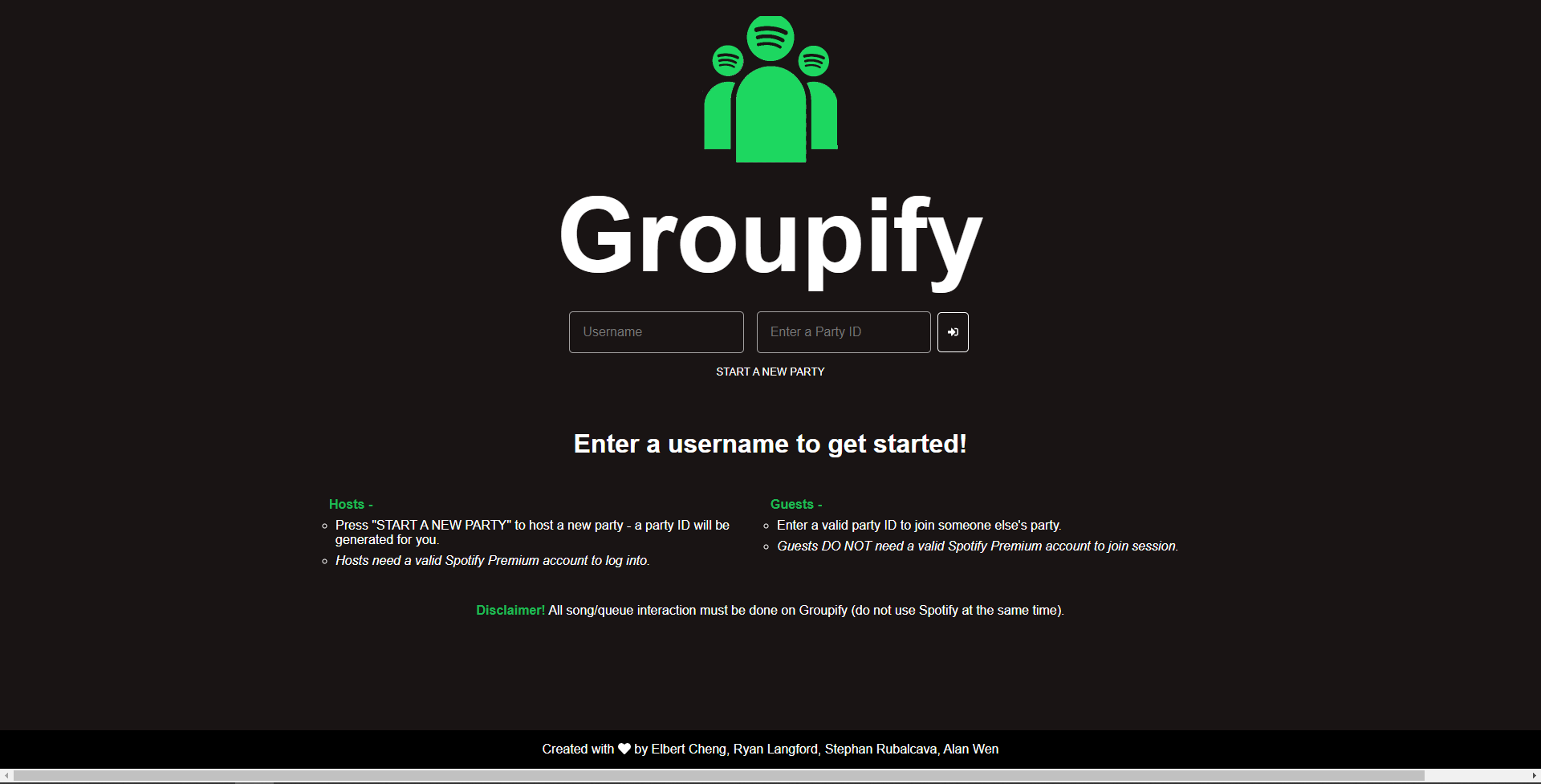
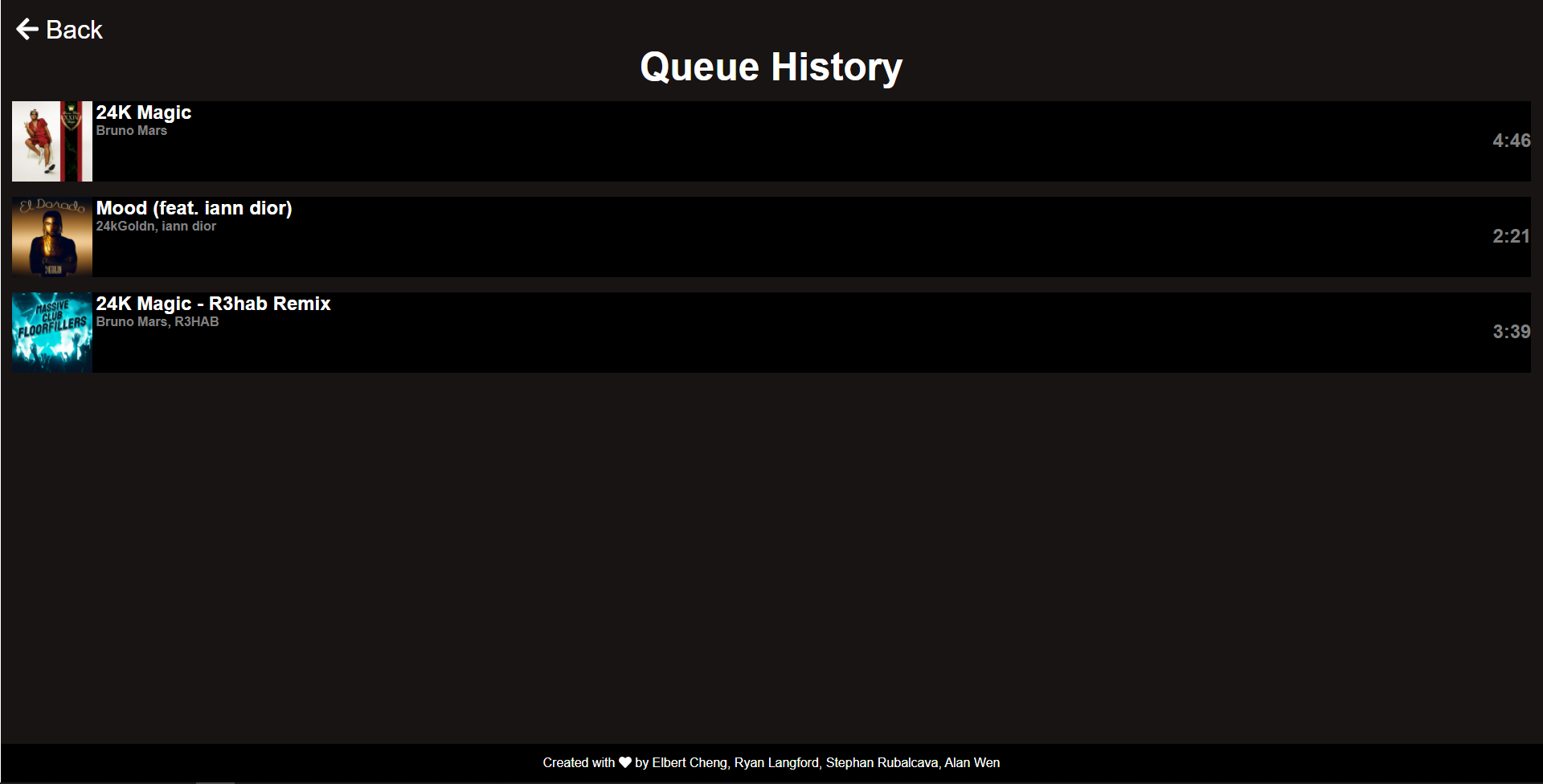
My role in this project was mainly a designer. I was in charge of displaying the elements of our project on the screen in a usable and pleasing way. I had to balance aesthetics with functionallity to create a layout that was easy to use, appealing, and worked on all screen sizes. I also helped create the elements of the web page and connect our server to Spotify using their API.
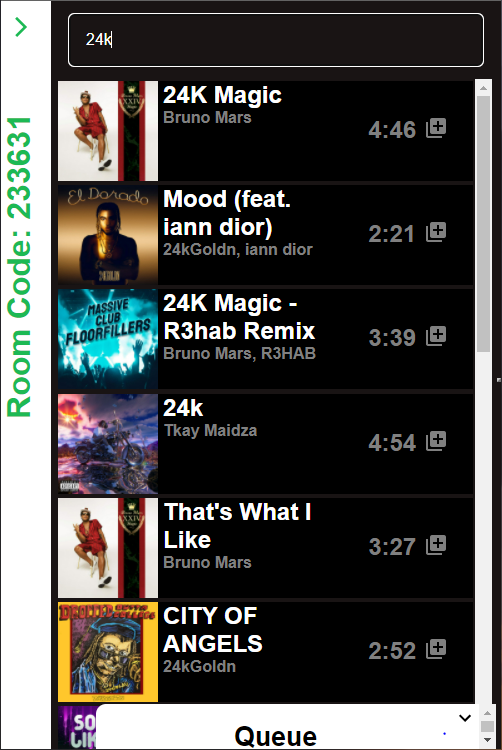
Mobile view of the Home Page
Web Developer for UW School of Medicine
During the Summer of 2022, I worked as a full-stack web developer for UWSOM (University of Washington School of Medicine) on their service learning and community engagement website (view actual website here). Although it was only for a summer, I worked on a lot of different parts of the website. I focused mainly on UX and was often designing new wireframes in Figma or using css to beautify the website itself. The most valuable thing I gained from this position was the ability to work with other developers in a high commit frequency environment, as well as how to handle discrepancies, code conflicts, and other blockers when they arise.

Design Projects
Web Design
I am passionate about web design. Specifically, I am interested in UI/UX design and web development.
Web Projects
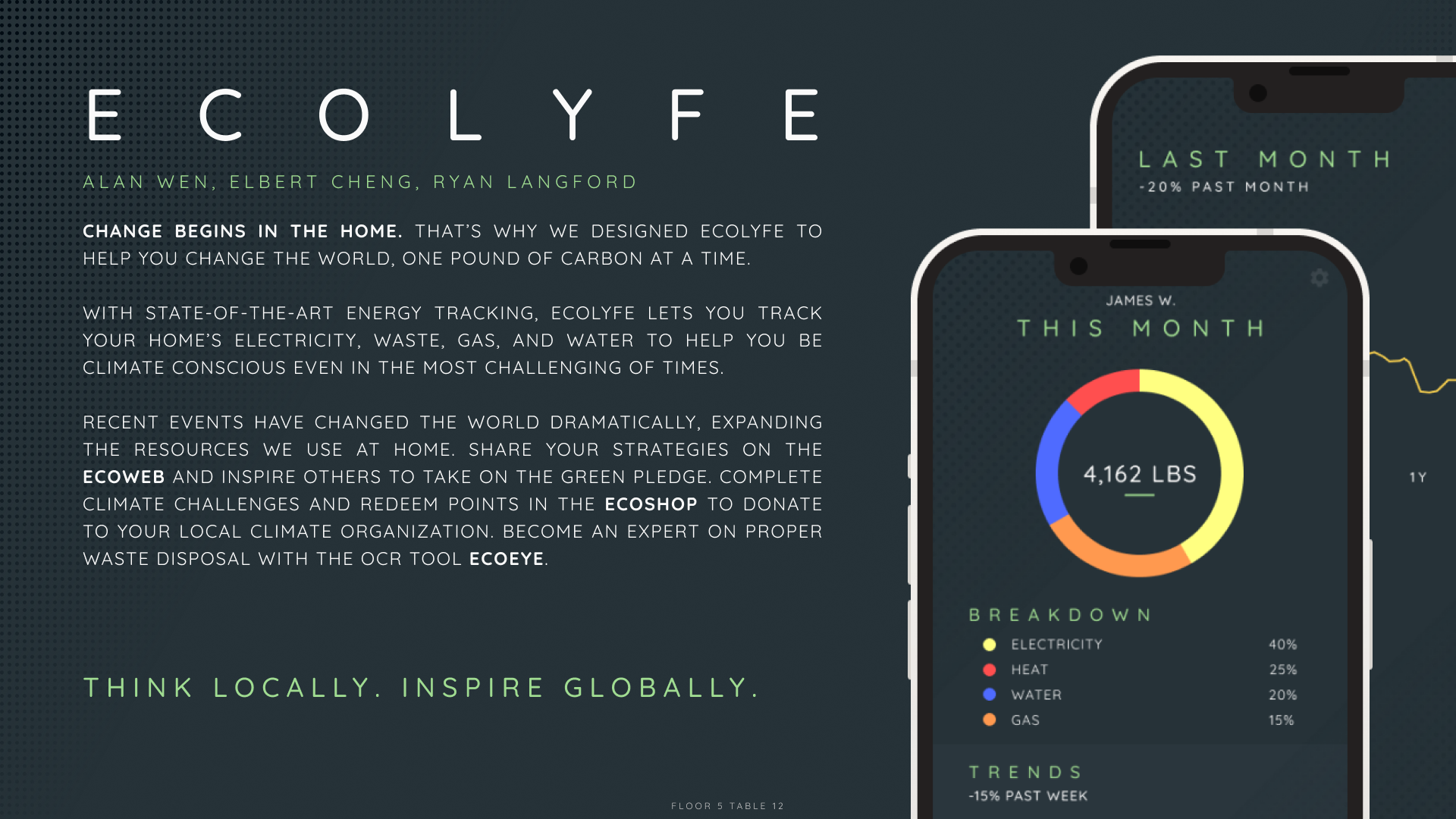
ECOLYFE
This project was the final deliverable for the 2022 Women in Engineering Hackathon at the Universiy of Washington. Myself and two partners were given 24 hours to ideate, design, and justify a prototype for an app that solves a problem related to or created by the pandemic. Our group decided on an at-home carbon footprint app that allows the user to track their resourse usage and take steps toward living a more green life using the various tools and infomation available in the app. Click here to view the Figma design.
ZOOM Rework
This project was the final deliverable for the 2021 DubHacks Hackathon at the Universiy of Washington. I created this website as a informational page on the plan for improving ZOOM's usability by making the UI simpler and improving customizability for closed captions.
Game Development
Although my game development experience is less extensive then my design experience, I have taken serveral coding and game development courses and have experience with a few projects.
Unity Project
During a summer camp at the University of Washington, I worked on a Unity game with a group of 4 students. The game we chose was a 3D zombie survial game in a small arena with waves of zombies and a timer/score system. I was responsible for the design and development of the player character and zombie entities. Using my knowledge of C# and familiarity with Unities premade assets, I was able to create my part of the game and have it playable in a week.
Hobbies and Creative Pieces
Dungeons and Dragons
I am a long-time Dungeons and Dragons player and seasoned Dungeon Master. Over the years, I have worked on a variety of homebrew rules, character customizations, settings and campaigns. These creations showcase my creativity in game design and interative storyelling.
Erdrea
Erdrea is a fantasy world of my creation where almost all of the campaigns I have written have taken place. It is a multi-continental world with a diverse cultures, variable geography, and a rich history.
Fableism
Fableism is a homebrew religion that I created for my world. It revolves around an omnicient being known as the Writer and its subclasses: The Oath of Fable Paladin and The Seer Warlock draw inspiration from the divination Wizard class.
Magic: The Gathering
Magic the Gathering is my favorite card game. I have built numerous decks, most of which are for the Elder Dragons Highlander format. These decks showcase my skills in game balancing and synergistic design.
View my decks on Archidekt.com!